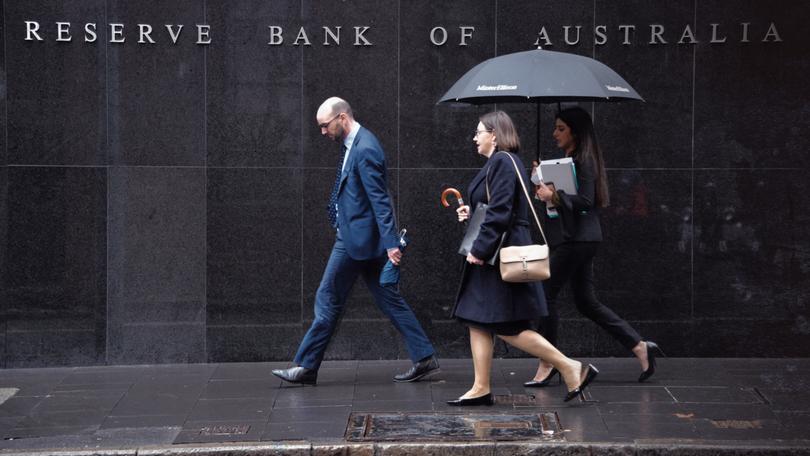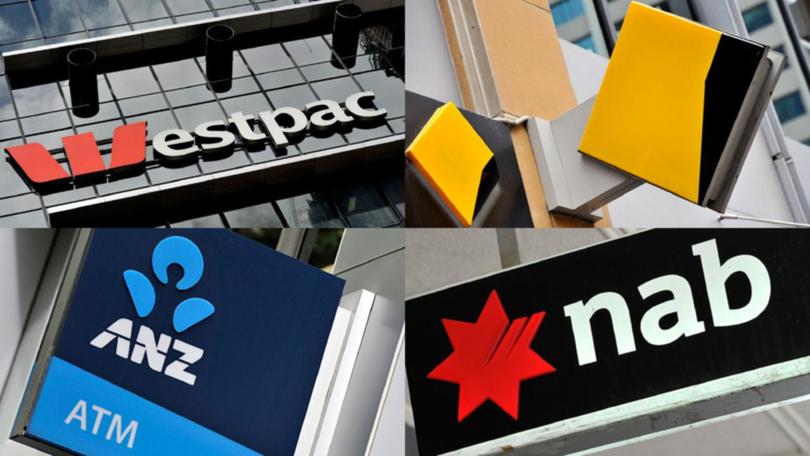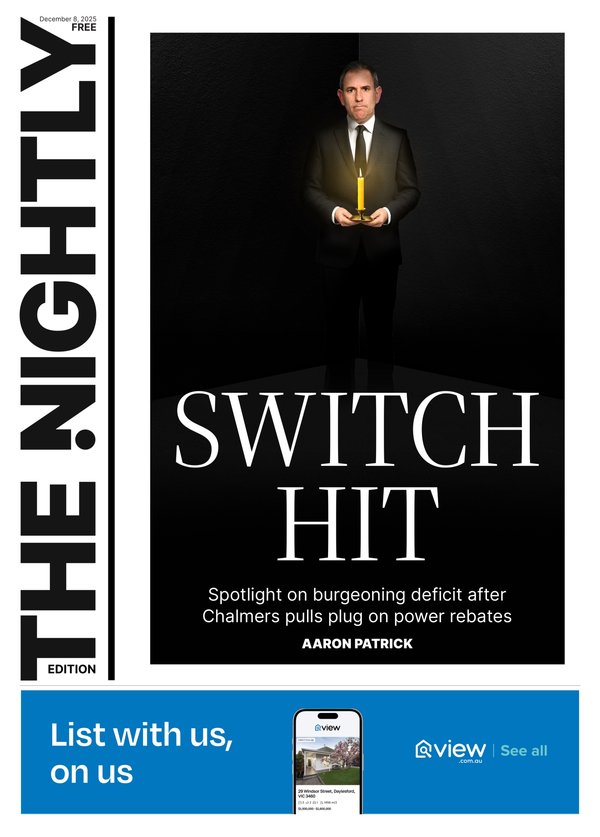RBA interest rates: Live updates from the Reserve Bank of Australia’s June board meeting

Action! Drama! Suspense! Intrigue! Shock! Horror!
Definitely sounds like something you’d want to tune in for, right?
But before you start microwaving the popcorn, dear reader, let us assure you not one of these headline words will make an appearance in the wash-up of today’s Reserve Bank board meeting.
In fact, governor Michele Bullock might as well cut out early, put her feet up and forgo her usual post-rate setting briefing and just replay highlights from May’s event, where such scintillating descriptors as “easing”, “uncertain” and “sustainably” were in heavy rotation after the official cash rate was again left on hold at 4.35 per cent.
Not exactly the stuff of blockbuster movie posters ... but, hey, it’s better than the alternative.
Bullock may have said last month that the board would not flinch at imposing another hike if inflation takes a turn for the worse. But (bar one or two overzealous killjoys) not even the most pessimistic economic boffin believes that’s a real possibility.
For all the uncomfortable squeezing most of us have endured, all indicators show 13 rounds of interest rates hikes since May 2022 are slowly working to bring inflation back to the RBA’s preferred 2 to 3 per cent target range. Sure, like after any toddler who’s slipped away to raid the birthday buffet and drink all the raspberry cordial, it’s been a bumpy road back to normal, with just the occasional temper tantrum when things didn’t go our way.
But there’s also been little in the data between the last meeting and now to suggest the board would be comfortable loosing the purse strings just yet. “Higher for longer”. Get used to hearing that phrase.
It means there’s little chance of immediate relief on the near-term horizon, with families holding an average $500,000 mortgage likely to have to keep finding the extra $1200 in monthly repayments until at least later this year ... or early 2025..
The black clouds still hanging over every belted homeowner is a resilient jobs market and looming stage 3 tax cuts, with the latter set to deliver a boost to disposable incomes from July 1. For most, it won’t be enough to have us reaching for the top shelf at Dan Murphy’s, but it will be on the RBA’s radar ... but not just yet.
For now we’re left waiting ... desperately hoping for a Hollywood hero, only to find it’s another bloody sequel that no one asked for (yes, we’re looking at you Speed 2: Cruise Control).
So, put away the popcorn, pass Granny’s Worther’s Originals and settling in for a long winter’s nap.
Key events
18 Jun 2024 - 01:02 PM
Time for a tough talk with your bank
18 Jun 2024 - 12:39 PM
Once again, the RBA says outlook remains ‘uncertain’
18 Jun 2024 - 12:30 PM
And (unsurprisingly) it’s a hold from the RBA
18 Jun 2024 - 12:22 PM
Cuts still ‘a long way off’
18 Jun 2024 - 12:08 PM
Mortgage pressure mounts, hardship applications rise
18 Jun 2024 - 11:54 AM
Perth records nation’s sharpest decline in home listings
18 Jun 2024 - 11:16 AM
Higher rates are more than just a financial cost
18 Jun 2024 - 11:02 AM
Some extra stimulus, but at what cost?
18 Jun 2024 - 10:45 AM
Want a great deposit rate for your savings?
18 Jun 2024 - 10:35 AM
The $64,000 question ... when will the RBA cut?
18 Jun 2024 - 10:17 AM
More turn to Bank of Mum and Dad
18 Jun 2024 - 10:09 AM
Will they, won’t they? Place your bets
Time for a tough talk with your bank
Ok, we now know there’s no chance of a rate cut anytime soon.
So where does that leave you and your mortgage?
Compare the Market’s David Koch says homeowners can’t afford to wait for a move by the RBA, with analysis of some of the rates available from the Big Four banks showing the average difference between new customer and exisiting customer rates at a whopping 1.96 per cent.

“Therefore, a person with an owner-occupier $750,000 loan could be saving $1008 a month when they switch from a rate of 8.54 per cent to 6.58 per cent,” he said.
“I’d encourage people to be sceptical of their home loan interest rate and to compare it against what their lender and other lenders are offering new customers.
“If you’ve been with your lender for more than a couple years, there’s a good chance you’ve fallen on a higher back book rate and are paying more than you need to be.”
Supply and geopolitical risk still a concern
The board’s statement also mentions the risk to supply chains amid tension in the Middle East and Ukraine.
It noted the improved outlook for the Chinese and US economies, and a resultant uptick in many commodity prices. While some central banks have eased rates, they remain alert to the risk of persistent inflation.
“Nevertheless, geopolitical uncertainties, including those related to the conflicts in the Middle East and Ukraine, remain elevated, which may have implications for supply chains.
“The board expects that it will be some time yet before inflation is sustainably in the target range.
“While recent data have been mixed, they have reinforced the need to remain vigilant to upside risks to inflation.”
Once again, the RBA says outlook remains ‘uncertain’
In its statement released minutes ago, the RBA board says while inflation has fallen “substantially” since its peak, the pace of decline has slowed.
The economic outlook remains uncertain and recent data have demonstrated that the process of returning inflation to target is unlikely to be smooth.
The board also noted ...
“Broader data indicate continuing excess demand in the economy, coupled with elevated domestic cost pressures, for both labour and non-labour inputs,” it said.
“Conditions in the labour market eased further over the past month but remain tighter than is consistent with sustained full employment and inflation at target.
“Wages growth appears to have peaked but is still above the level that can be sustained given trend productivity growth.
“Recent data revisions suggest that consumption over the past year was stronger than previously suggested. At the same time, output growth has been subdued, and consumption per capita has been declining, as households restrain their discretionary expenditure and inflation weighs on real incomes.
And (unsurprisingly) it’s a hold from the RBA
The Reserve Bank has held rates at 4.35 per cent for a fifth-straight month, wary of squeezing households and businesses any further despite a resilient jobs market and the forthcoming stage 3 tax cuts.
Cuts still ‘a long way off’
VanEck head of investments capital markets Russel Chesler is among those bearish analysts to have pushed out the possibility of rate cuts to well into next year.
“Any reduction to the cash rate is a long way off,” he said.
“We don’t see a rate cut happening until 2025 – and possibly not until mid-year. Since the RBA last met, we haven’t seen evidence of inflation easing. In fact, there are some indicators that inflation may be re-accelerating.
“All eyes will be on the CPI print next week to see whether inflation has changed direction.
“Services inflation has proven difficult to shift due to the strength of the labour market, with wage growth not expected to fall by much for the rest of this year.”
The red-hot property market is also a factor, with prices increasing for the 16th straight month in May - up 0.8 per cent ccording to CoreLogic.
Mortgage pressure mounts, hardship applications rise
The Council of Financial Regulators last week sounded the alarm on the RBA piling more pressure on already suffering homeowners, noting more borrowers are falling behind on mortgage payments.
Hardship applications were also up.
It’s not hard to see why. Thirteen rounds of hikes took the official cash rate from a record low 0.1 per cent to 4.35 per cent in the space of 18 months, with most variable mortgages now more than 7 per cent.
The council said households have has to trim and adjust their budgets to meet repayment demands but most borrowers had continued to meet their obligations.

“Members observed that the share of borrowers falling behind on mortgage payments has continued to rise, as have financial hardship applications, but from a low level,” it said.
The council is chaired by RBA governor Michel Bullock and also includes representatives from the Australian Prudential Regulation Authority, the Australian Securities and Investments Commission and the Australian Treasury.
Countdown’s on!
We’re just half an hour away from the RBA rates call.
Despite the pressures of steeply higher interest rates, RBA members don’t want to cut interest rates until they receive further evidence that inflation is slowing, a strategy that faces two key risks.
First, by holding policy restrictive for too long, the RBA could confer additional pain on borrowers and businesses most vulnerable to, and least prepared for, interest rates to remain higher for longer while heightening the risk of a significant rise in the jobless rate.
On the other hand, rate cuts could come before price pressures have been sufficiently tamed, igniting additional spending and economic growth that sustains inflation above target.
Most experts are tipping a fifth-straight hold.
Perth records nation’s sharpest decline in home listings
Feverish buyers are snapping up homes so quickly that Perth recorded the sharpest decline in total listings of all capitals over the past year.
Though a new PropTrack report shows new listings in Perth were up 3.1 per cent in May compared to the same time last year, demand has seen total stock plummet 23.4 per cent below its level 12 months ago.

PropTrack senior economist Paul Ryan said properties in Perth were being sold at a record rate of just 33 days, on average, over the past year.
“This is the second-lowest number of days after Brisbane and is well below the national figure of 43 days,” he said.
“This means that homes that are listed are being sold quickly, and the total number of listings is now less than half the level seen before the pandemic in May 2019.”
Gains for Aussie shares ahead of RBA rate call
The ASX was up across the board ahead of the Reserve Bank’s decision on interest rates.
The S&P/ASX200 was up 67.4 points, or 0.88 per cent, to 7767.7.
More than 35 experts polled by Finder predict no change to the cash rate in June.
Market expectations of an unchanged rate remain at 95 per cent on the ASX rate indicator.
IG market analyst Tony Sycamore expects the tone of the meeting to remain neutral, as it had in the last meeting, when the board said nothing is ruled “in or out”.
Every ASX sector was up, with utilities the biggest gainer, rising 1.6 per cent.
In the heavyweight mining sector, Fortescue had sunk 4.7 per cent to a seven-month low of $21.94, with media reports that an unnamed institutional investor had sold off a monster $1.1 billion stake in Andrew Forrest’s company after Monday’s closing bell.
Elsewhere in the sector, BHP was up 0.5 per cent, Rio Tinto had gained 0.7 per cent and goldminer Newmont had added 2.2 per cent.
CBA’s 1.4 increase led the way for the four big banks, with NAB rising 1.1 per cent, ANZ gaining 0.6 per cent and Westpac up 0.5 per cent.
AAP
Reforms on the way for BNPL providers
Australia’s central bank is working with the Federal Government to modernise the country’s regulatory framework for retail payments and launch a “holistic review” of the sector.
“There are many interesting policy issues to explore, including the cost and transparency of payment services and how we can promote competition that benefits end users,” Ellis Connolly, head of payments policy at the Reserve Bank, said in a speech in Melbourne on Tuesday.
The reforms will allow the RBA to regulate “newer players” including payment gateways, payment facilitators, digital wallet providers and buy now, pay later services, Mr Connolly added.
Once the reforms are in place, the RBA will launch a “holistic review” of retail payments regulations.
“This review will help us to set our regulatory priorities for the next few years,” he said.
It will focus on specific issues, including:
- Transparency of payment services, in particular transaction fees
- Merchant payment costs to encourage financial institutions to route debit transactions to the lowest-cost card network
- Whether the current surcharging framework is fit for purpose
- Mobile wallet fees and competition issues
- Cost and transparency of cross-border payments
Many of these issues involve online retail payments, which are growing strongly in Australia, Mr Connolly said.
He cited a consumer payments survey where 40 per cent of consumer payments, by value, were online in 2022, up from 13 per cent in 2007.
Bloomberg
